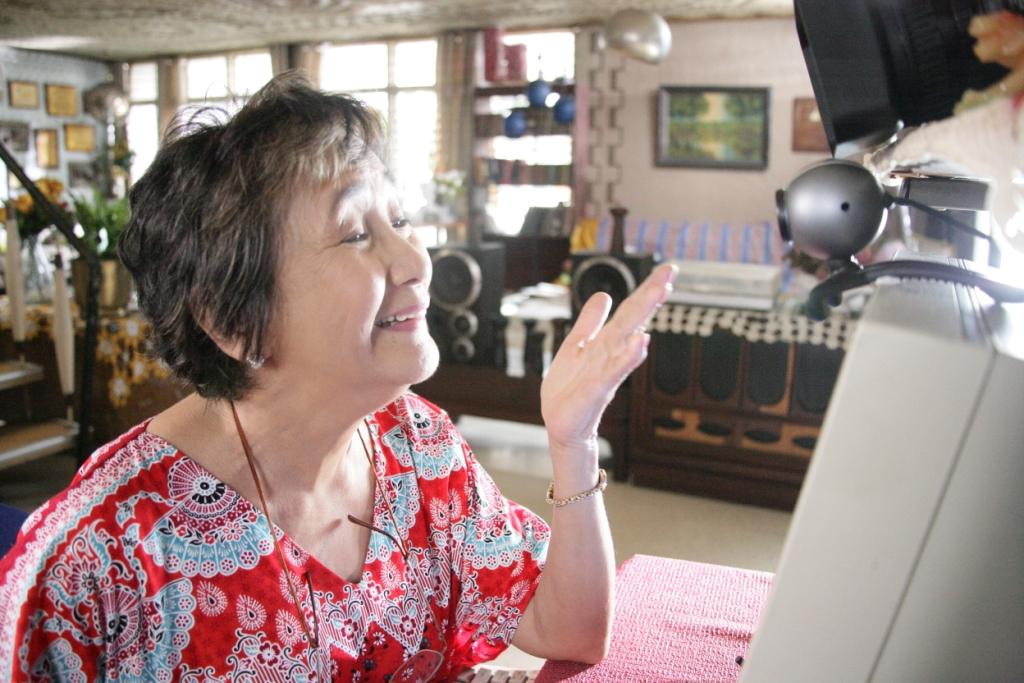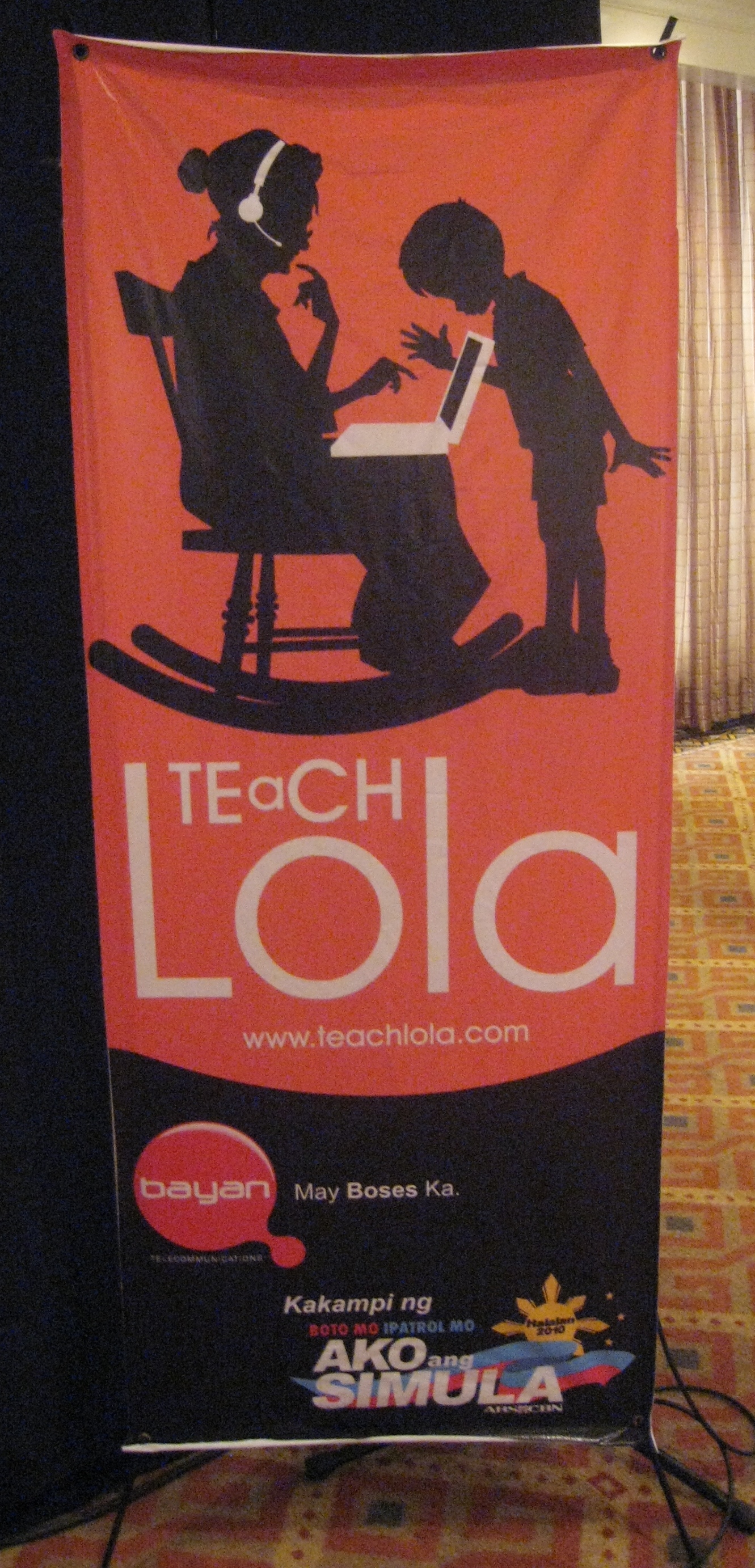Kids now are so techy savvy that their whole life revolves around computers and the internet. My own kids would rather be online than watch TV these days. And when school’s out, like today — the last day of exams, they are with friends at the nearest internet cafe to play games. Their interests and lingo have become worlds apart from those who have remained in the era before the advent of computers.
I am one of the lucky parents who have kept pace with our children in terms of technology use. But when I go to visit my Mom who is in her 80s, I still see a person who does not know how to use a mobile phone, writes letters by hand and sends them via snail mail, and does most of her written activities with a pen and paper still. She prefers it that way but it also saddens me since there is not much common interest to keep conversations going between her and my kids for long. After a while, my kids drift off to their own conversations while Mom ends up conversing with us, her children.
Then, just the other day, I got the surprise of my life when Mom’s decades-long American penpal added me up on Facebook. It really made me think that if only my Mom (who is now widowed) became comfortable using a computer, how much more meaningful her life could be if she had direct contact with all her friends and relatives instead of being limited to snail mail.
In the book “The Five Things You Must Discover Before You Die”, author John Izzo wrote about cultures that have lost this connection between the young and the old. This can be observed mostly in cultures with very advanced technology. Tribes and clans, where the senior citizens continue to play a large role in leading and are looked up to, are few and seem to be a dying tradition. And yet, Izzo discovered that in talking with the seniors to gather data for this book, there was a richness to the wisdom and life experiences of the seniors that the youth would truly benefit from. Likewise, seniors seem to gain back some of their youthfulness and vitality when engaged with the very young generation.
MUSIC was the generation gap of my youth. My parents could not understand the “noise” that my friends and I would often love to listen to or dance to at discos. In the generation of our children, the generation gap is TECHNOLOGY.
How do we get the very young communicating again with their much older family members?
Bayan Telecommunications conducted an informal poll via Plurk and Facebook (2 social networking sites), which revealed that, given the chance, 87% of young people want to continue communicating with their grandparents (lolos and lolas). This same poll revealed that 81% of Filipinos are still close to their grandparents and 57% still visit from time to time. And yet, ironically, the Internet Age is also responsible for further widening the generational gap between a younger set that is used to the internet as a communications and research tool and an older generation that does not know where to begin and is in danger of being left behind.
This realization became the foundation for Bayan’s newest advocacy, Teach Lola – an initiative to bridge the communication gap between the younger and older generation.

This advocacy rides on the initial resounding success of Lola Techie, who has been seen in tarps all over the metro besides TV ads. Lola Techie aims to show that senior citizens are just as capable of enjoying the benefits of the internet just as the generations after them.

“Project Lola endeavors to teach the older set about the computer and the internet. It offers training on such diverse topics as how to operate a computer, where to find the appropriate icons to click, how to write and manage e-mail, how to go about instant messaging, and how to navigate the intricate world of social networking sites,” Tunde Fafunwa, Chief Executive Officer of Bayan Telecommunications, shares.
The program has 2 components:
1. Teach Lola trainers;
2. An official website (www.teachlola.com) where anyone can download manuals for free.
For the first wave, Bayan employees’ grandparents were the first targets. 20 trainers from all departments in Bayan were taught by teaching partner, Learn.ph, to educate the targetted grandparents as well as spearhead events that will aim to bring more apos together with their lolos and lolas.
Aside from recruiting more people to become Teach Lola trainers, Bayan is enabling other people as well to participate through a do-it-yourself process. An online manual is available at the official website which anyone can download. Anyone can likewise update the Teach Lola modules, akin to how user-generated updates are done in Wikipedia. This means that more people nationwide and globally can get involved in this initiative.

It is really not far-fetched that lolos and lolas will eventually latch on to the internet.
Lola Techie’s presence on Plurk, Facebook, Twitter, Multiply and YouTube gives us a glimpse of what could be. And guess what! A large majority of her followers are my kids’ generation! Just 2 months into the launch of Lola Techie, she already had over 90,000 Facebook fans, more than 4,000 Multiply contacts, and almost 2,000 followers in both Twitter and Plurk. This does not include hundreds of thousands of views of her videos on YouTube. And Lola Techie interacts with all her contacts on these sites. Imagine what it would be like for your children and their grandparents — sitting together in front of a computer, interacting and playing or chatting! How wonderful that would be to behold.
I am personally very happy that such an advocacy is being launched. I hope we can really get many of the youth involved to bring what comes naturally to them to their grandparents, for whom this can sometimes be a very intimidating obstacle.
One last thing. Here’s a teaser for the Teach Lola program.What a world it would be to see our seniors become tech savvy…
